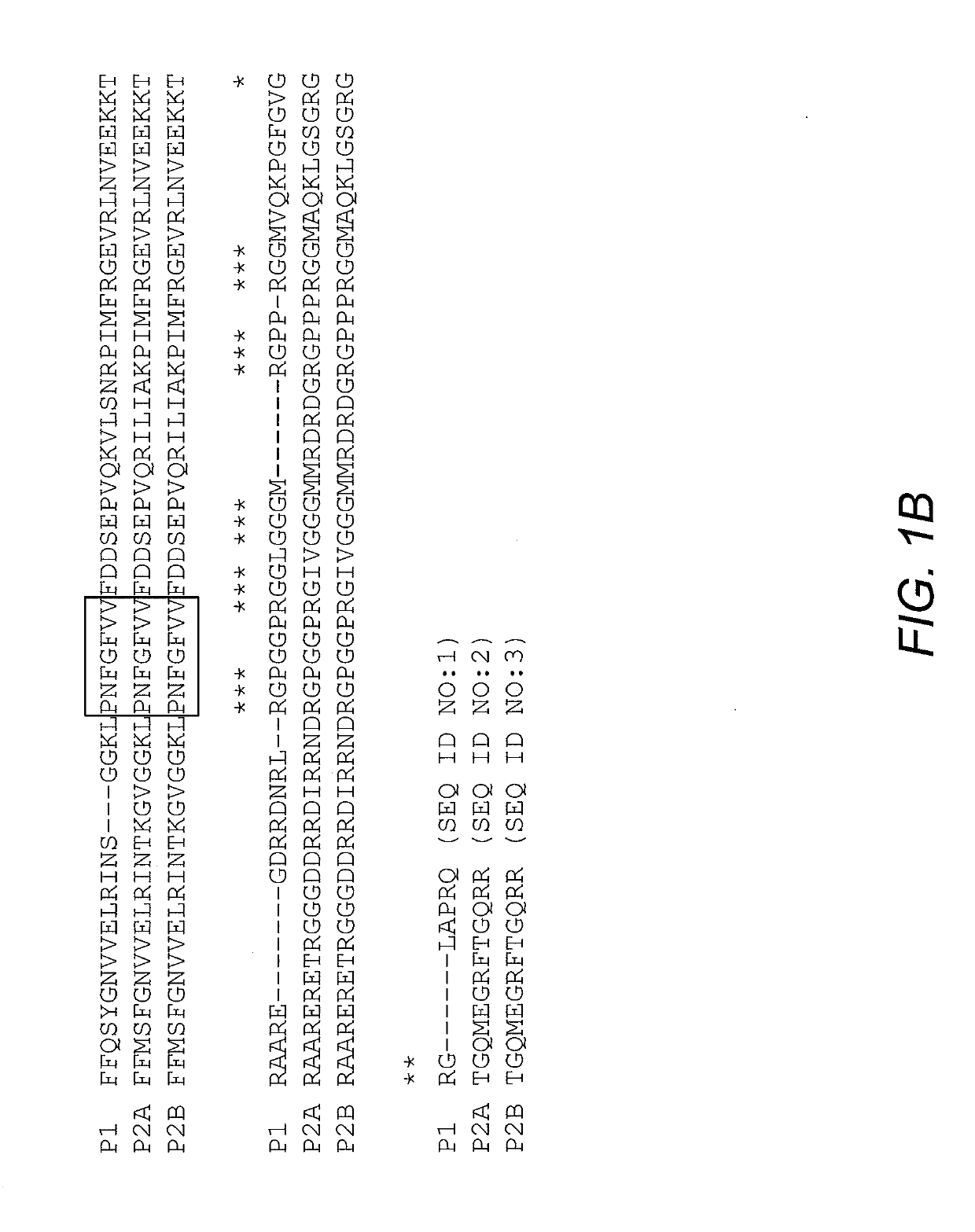Fusion Protein and Nucleic Acid Molecule for Light-Dependent Stress Granule Assembly
a technology of light-dependent stress and granules, which is applied in the direction of peptide sources, enzymology, peptides, etc., can solve the problems of confounding studies, assembly and/or dynamics of these structures
- Summary
- Abstract
- Description
- Claims
- Application Information
AI Technical Summary
Benefits of technology
Problems solved by technology
Method used
Image
Examples
example 1
Fusion of Wild-Type G3BP1 (G3BP1FL) with the Photolyase Homology Region of CRY2 (CRYPHR) Leads to Stress Granule Formation
[0038]N-terminal photolyase homology region (PHR) of Arabidopsis thaliana cryptochrome 2 (CRY2) simultaneously oligomerize upon blue light stimulation (Bugaj, et al. (2013) Nature Methods 10:249; Kennedy, et al. (2000) Nature Methods 7:973-5). Expression of CRY2PHR-mCherry alone in mammalian cells induces negligible visible cluster after blue light activation (Lee, et al. (2014) Nature Methods 11:633-636). Fusing Intrinsically Disordered (IDR) proteins to CRY2 causes reversible droplets in living cells upon blue light stimulation (Shin, et al. (2017) Cell 168:159-171). This system, termed OptoDroplets, creates membraneless organelles by switching on light-activated-proteins. Initially, it was determined whether OptoDroplets of FUS and TDP43 could incorporate the stress granule component G3BP1 into the droplets. This analysis indicated that G3BP1 could not be inco...
example 2
Replacement of NTF2-Like Domain of G3BP1 (G3BP1D1-142) With CRYPHR Leads to Stress Granule Formation
[0040]G3BP is essential for stress granules assembly as condensate (Kedersha, et al. (2016) J. Cell Biol. 212:845). The NTF2-like domain of G3BP1 contributes to the stress granules formation by mediating oligomerization and mutual interaction with USP10 and Caprinl (Kedersha, et al. (2016) J. Cell Biol. 212:845; Tourriere, et al. (2003) J. Cell Biol. 160:823). To reconstitute stress granules with a light inducible system, the NTF2-like domain of G3BP1 was deleted (residues 1-142; G3BP1D1-142) and replaced with mCherry-tagged CRY2PHR.
[0041]It has been reported that CRY2PHR alone shows some nuclear bodies and little cytoplasm clustering upon blue light stimulation, while the CRY2PHR E490G (CRY2olig) rapidly forms light-dependent clusters (Lee, et al. (2014) Nature Methods 11:633-636; Shin, et al. (2017) Cell 168:159-171; Taslimi, et al. (2014) Nat. Commun. 5:4925). Consistent with previ...
example 3
CRY2PHR-mCherry-G3BP1D1-142 Granules are Characteristic of Stress Granules
[0042]It was subsequently determined whether these CRY2PHR-mCherry-G3BP1D1-142 granules were stress granules. First, stress granules marker GFP-TIA1 was co-expressed with the CRY2PHR-mCherry-G3BP1D1-142 fusion protein. With blue light activation, CRY2PHR-mCherry-G3BP1D1-142 assembled into granules and GFP-TIA1 was incorporated into these granules. As a control, it was observed that GFP-TIA1 could not be incorporated into CRY2olig clusters. Another stress granules component TDP43 was also incorporated into CRY2PHR-mCherry-G3BP1D1-142 granules. As such, the CRY2PHR-mCherry-G3BP1D1-142 granules were positive for stress granule proteins.
[0043]Stress granules are composed of proteins and mRNA (Kedersha, et al. (2016) J. Cell Biol. 212:845; Panas, et al. (2016) J. Cell Biol. 215:313-323). To investigate whether polyadenylated mRNA were present in CRY2PHR-mCherry-G3BP1D1-142 granules just as in canonical stress granu...
PUM
| Property | Measurement | Unit |
|---|---|---|
| nucleic acid | aaaaa | aaaaa |
| heat stress | aaaaa | aaaaa |
| osmotic stress | aaaaa | aaaaa |
Abstract
Description
Claims
Application Information
 Login to View More
Login to View More - R&D
- Intellectual Property
- Life Sciences
- Materials
- Tech Scout
- Unparalleled Data Quality
- Higher Quality Content
- 60% Fewer Hallucinations
Browse by: Latest US Patents, China's latest patents, Technical Efficacy Thesaurus, Application Domain, Technology Topic, Popular Technical Reports.
© 2025 PatSnap. All rights reserved.Legal|Privacy policy|Modern Slavery Act Transparency Statement|Sitemap|About US| Contact US: help@patsnap.com



